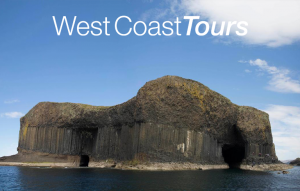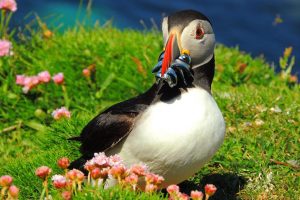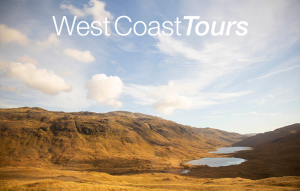Staffa & Fingals Cave Treshnish Wildlife Tour (Sails from August)
-
Departs:
Tobermory, Ardnamurchan
- 4 hours
£ 60
Staffa and Treshnish Isles Wildlife Tour from Fionnphort or Iona
-
Departs:
Iona, Fionnphort
- 6 hours
£ 85
ABOUT TRESHNISH ISLES
The Treshnish Isles are a central part of the scenery of the southern Hebrides. Like a fleet of Dreadnoughts passing through the Hebrides in line astern, these islands have been landmarks for travellers through the Hebrides for at least 1000 years. The names of some of the islands still reflect their importance to the Vikings who once ruled in the Hebrides.
Lunga is the best place in the Treshnish Isles to view the puffins, they can usually be seen from mid April until early August
The Treshnish Isles are formed from 8 principal islands varying in size from less than 4 hectares to 60 hectares. The archipelago lies, at its closest, 3km west of Mull and extends along a northeast-southwest axis for a distance of 11km.
Apart from the scenery of the Treshnish and their mystique as a group of uninhabited islands, they hold nationally important treasures in the form of a mediaeval castle as well as a thriving community of wildlife.
HISTORY
The Treshnish Isles today are uninhabited except for their huge colonies of seabirds, but archaeological history reveals that they were settled as far back as early Viking times with the last inhabitants leaving in the 1850s. There’s a ruined village in the northeast of the Lunga, the largest island in the archipelago.
The islands have attracted travellers and visitors for at least 1000 years and some place names are rooted in the Viking language, reflecting their Hebridean rule. The names of some of the islands still reflect their importance to the Vikings who once ruled in the Hebrides. The islands, and especially Cairnburgh Castle on the islands of Cairn na Burgh Mòr and Cairn na Burgh Beg, gave the Vikings and subsequent inhabitants such as the MacDougall, MacDonald and Maclean clans a strong strategic position until it was abandoned in the late 1700s.
Visitors today can not only take in the spectacle of the Treshnish Isles’ huge and diverse population of seabirds, but explore the ruins of hill forts, castles and medieval chapels as welll as hunt for fossils on some beaches.
Since 2000 the Treshnish Isles have been owned by The Hebridean Trust who commision surveys, conservation and restoration work to aid archaeological research.
WILDLIFE
The Treshnish Isles are currently designated as a Site of Special Scientific Interest and are a Special Protection Area under the EC Directive on the Conservation of Wild Birds.
The islands provide a breeding habitat for nationally important concentrations of seabirds. At the Harp Rock on the island of Lunga, these are particularly spectacular because dense aggregations of guillemots can be viewed across a narrow but precipitous ravine providing a singular view of a seabird colony.
Approximately 47 differnt species of birds can be spotted, including razorbills, guillemots, fulmars, storm petrels, kittiwakes, herring gulls, and shags – as well of course the large population of puffins!
The best time to see the puffins in the Treshnish Isles is from mid April until early August. These comical birds have little fear of humans and its possible to get very close to them.
Amongst the fallen rocks on the fossil beaches there are internationally important concentrations of breeding storm petrels. These birds, which are the size of swallows, are highly secretive and, to avoid being eaten by gulls, they only come ashore at night from the deep ocean where they feed.
During winter, the islands provide valuable grazing for barnacle geese and, in the Autumn, the beaches are breeding habitat for nationally important populations of Atlantic grey seals, which give birth to their white pups along their shores. In early summer it is also possible to hear the rasping call of the corncrake on Lunga.









